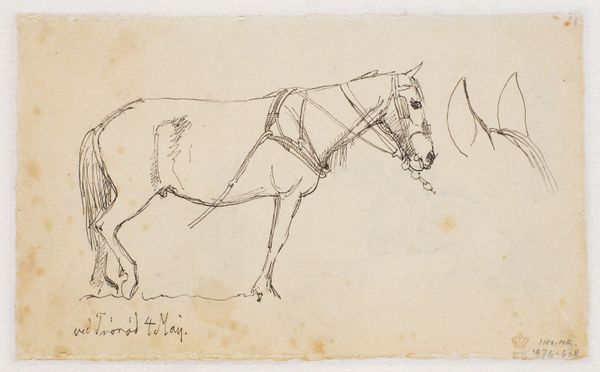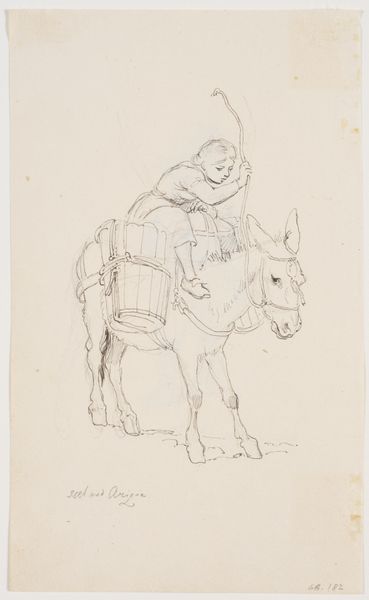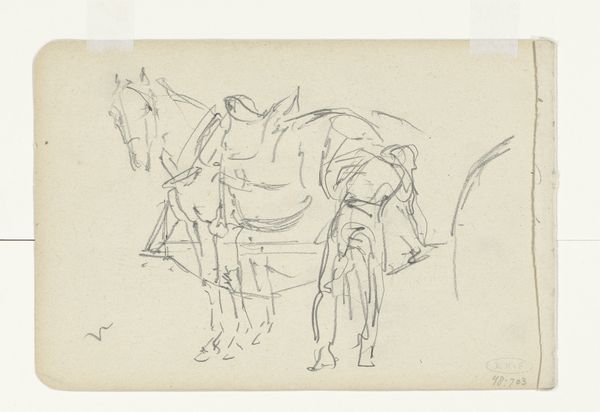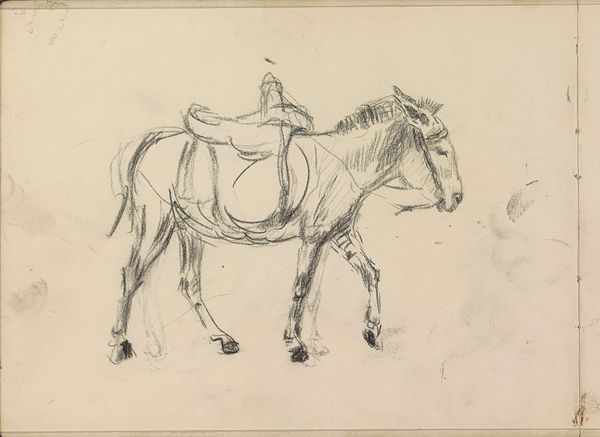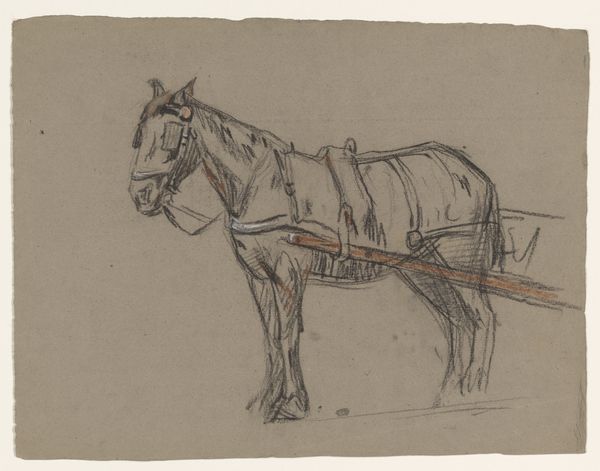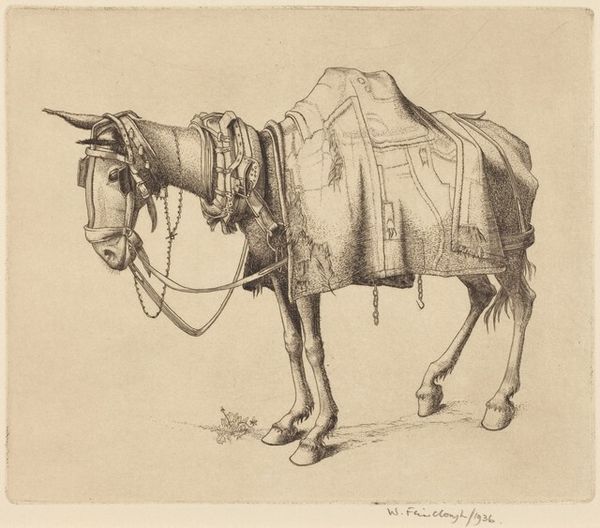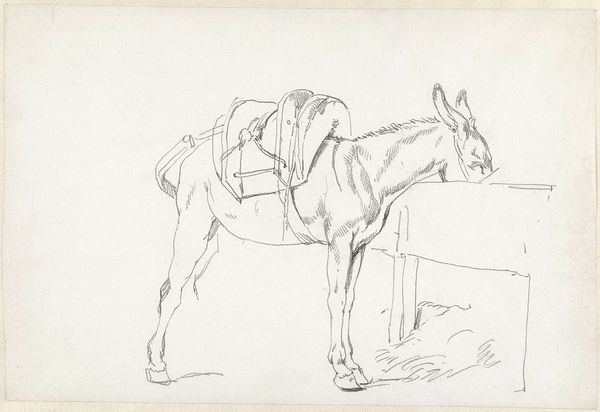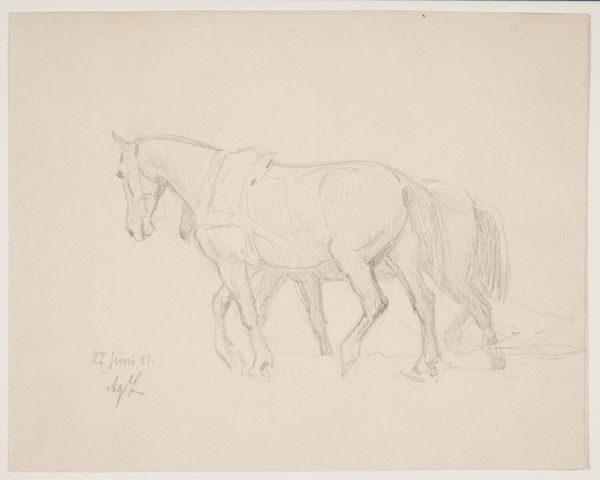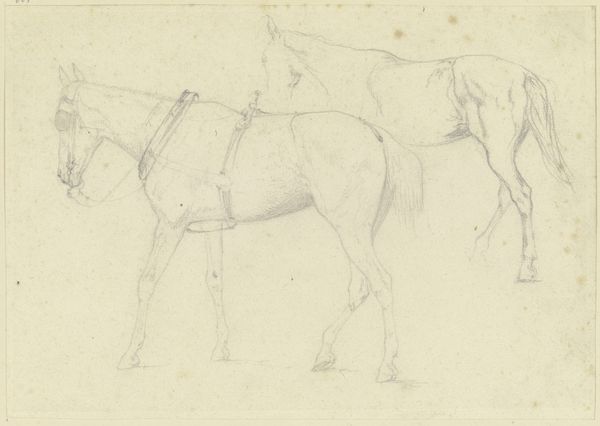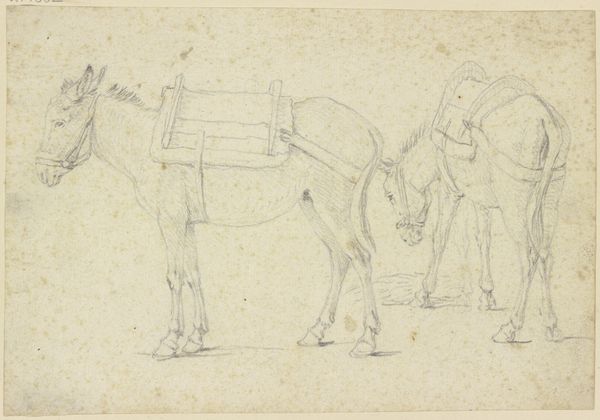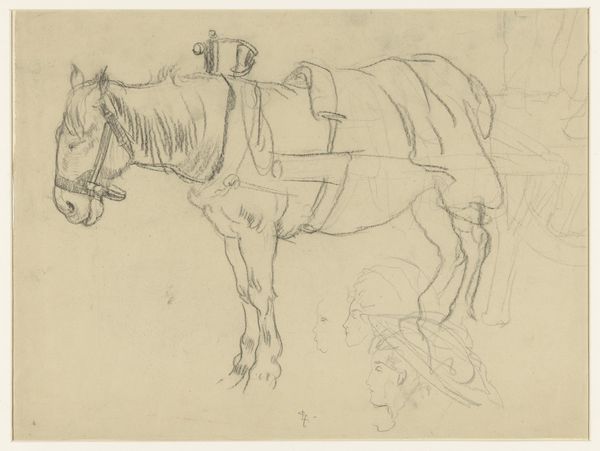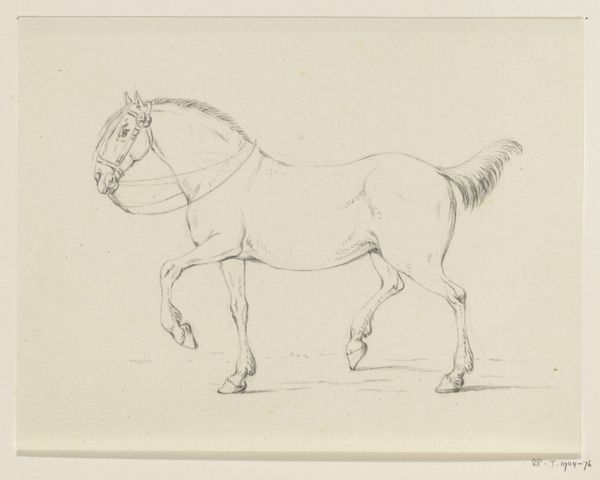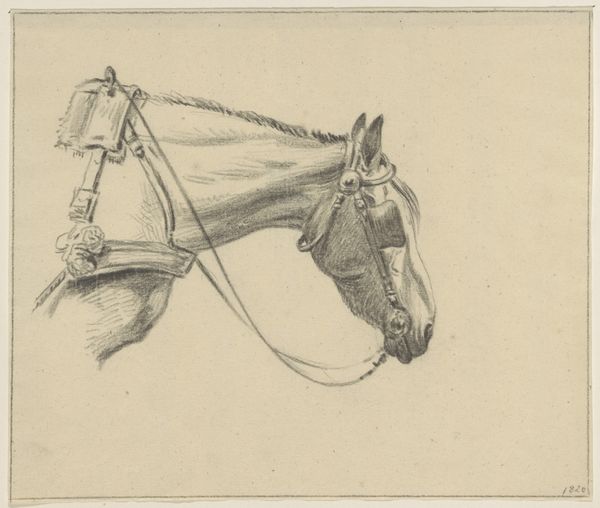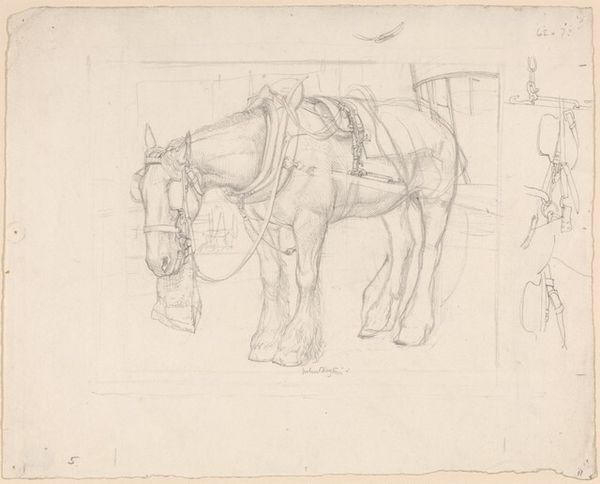
drawing, pencil
#
drawing
#
light pencil work
#
quirky sketch
#
sketch book
#
landscape
#
personal sketchbook
#
idea generation sketch
#
sketchwork
#
pen-ink sketch
#
pencil
#
horse
#
line
#
sketchbook drawing
#
storyboard and sketchbook work
#
sketchbook art
#
realism
Dimensions: height 151 mm, width 213 mm
Copyright: Rijks Museum: Open Domain
Curator: Pieter Ras's "Aangespannen karrepaard," likely created between 1903 and 1907, captures a harnessed carthorse in a series of pencil lines. It resides here at the Rijksmuseum. Editor: My initial impression is one of quiet labor, perhaps even weariness. The light pencil work gives it an ephemeral quality, yet the subject – a working animal – speaks to something far more enduring. Curator: Absolutely. Consider how the horse functions symbolically across cultures. It often represents strength and freedom, but here, weighed down by the harness, the symbolic load shifts to reflect constraint and service. It prompts me to think of Jung's idea of the shadow self, those parts of ourselves that we might repress for survival. Editor: Precisely. I immediately see the class dimensions. Cart horses were the engine of the working class. To see it depicted like this, in what looks like a preliminary sketch, forces a confrontation with labor—specifically, exploited labor that powered industrialising societies and generated immense wealth disparities. Curator: It's intriguing you say "preliminary." Ras uses lines in a manner similar to handwriting – spontaneous, raw. It almost seems that he’s trying to evoke not just an image, but a visceral felt experience, one that connects directly to our memory of similar images. Editor: Yes, the sketched-quality adds layers to the horse’s story; not just the visible one of physical toil, but also speaks to ideas around the invisibility of certain groups. The very lightness of the sketch mirrors their lack of weight in mainstream society. It forces you to question who decides what stories are worth fully elaborating. Curator: Such close looking at the social meaning deepens the narrative impact this little drawing. Ultimately, this work serves as a reminder of the unseen forces shaping the modern world, one sketch at a time. Editor: Agreed. It makes visible not only the labor but also the social narratives inherent in depictions of labor and invites us to re-evaluate our assumptions and values around class, gender, and race within these depictions.
Comments
No comments
Be the first to comment and join the conversation on the ultimate creative platform.
